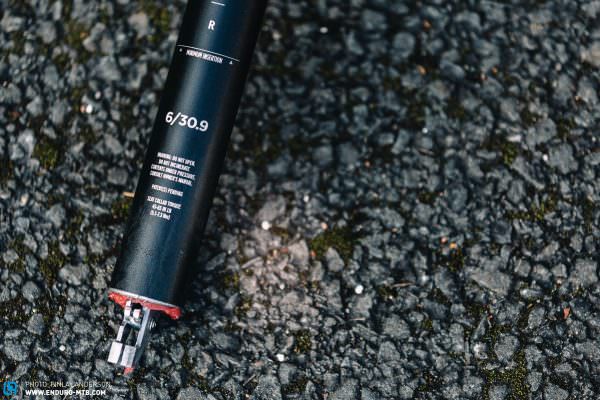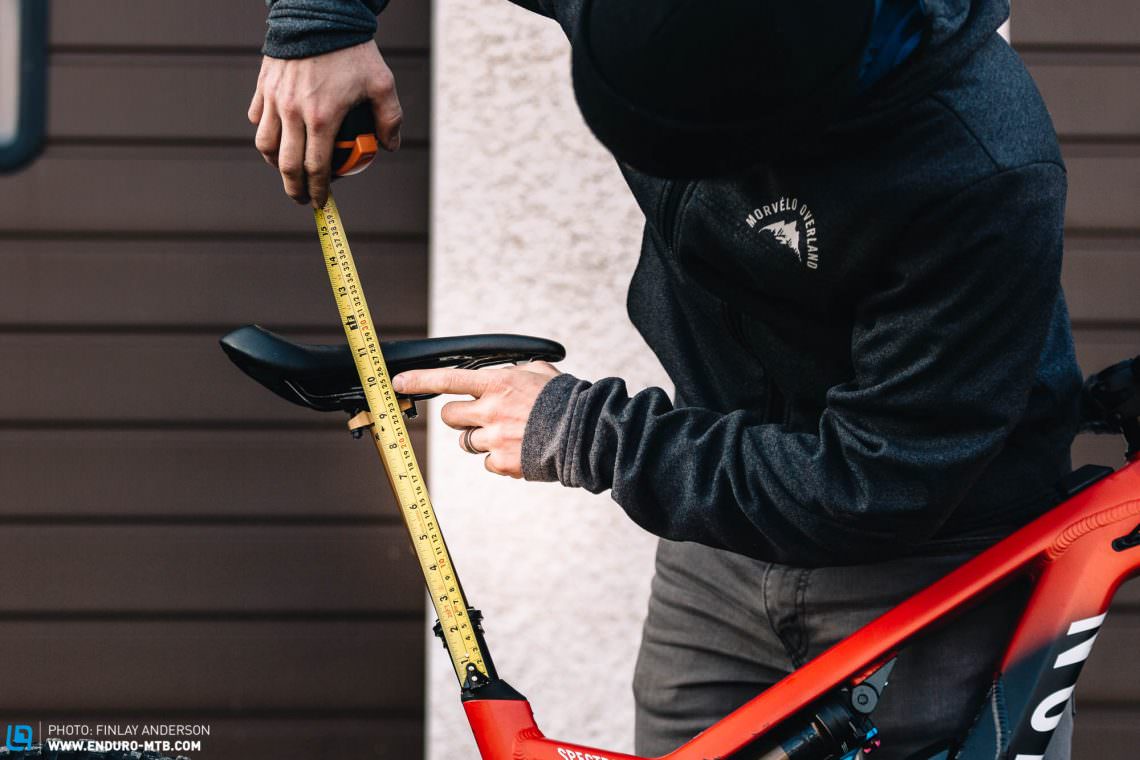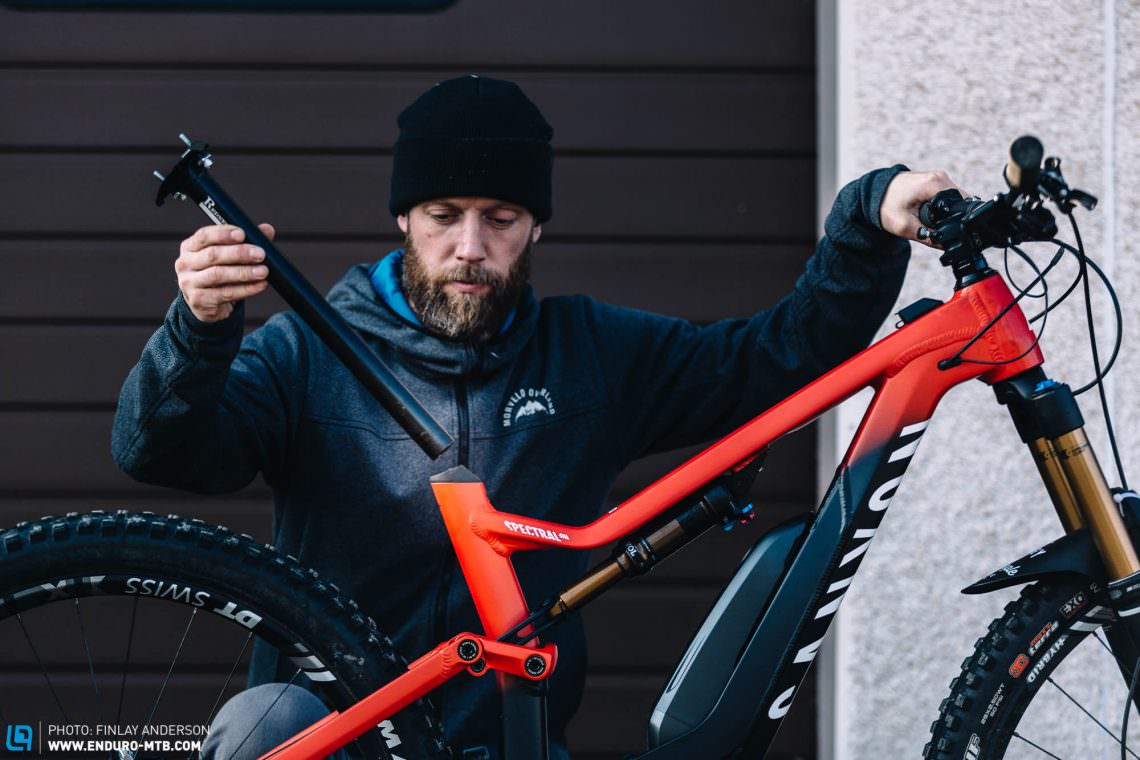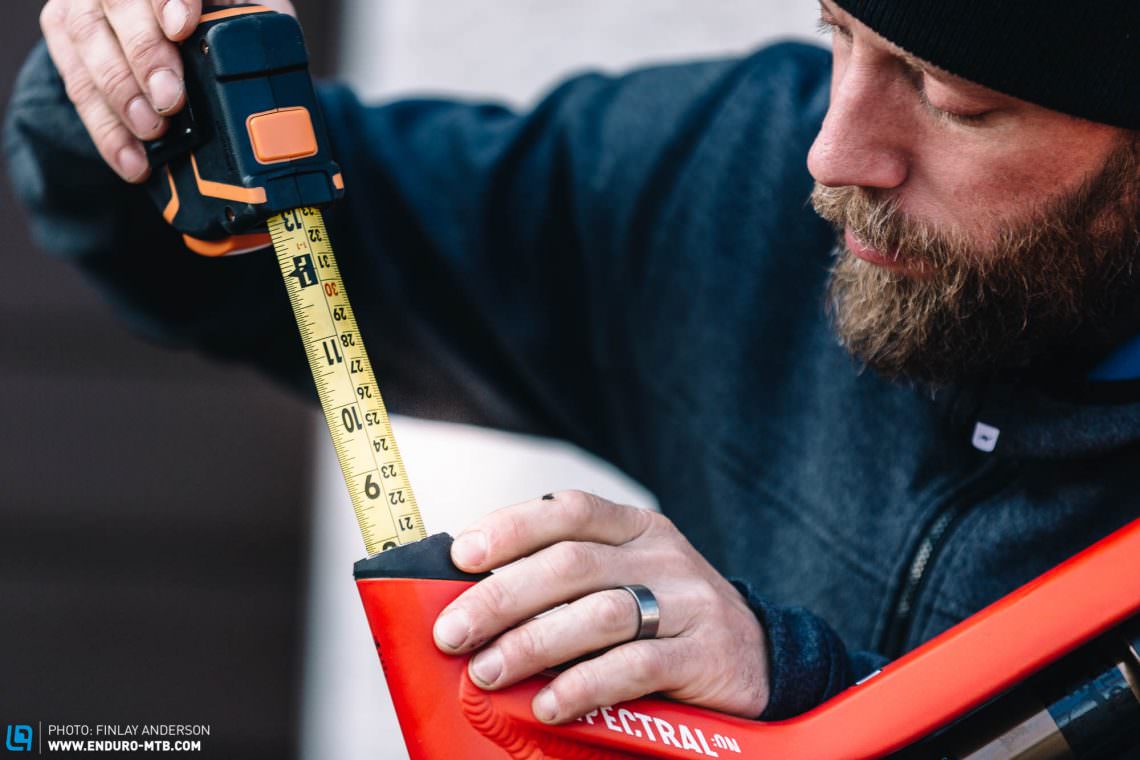If you’re planning on upgrading your dropper post to one with more travel, here’s our guide to calculating if it will fit your frame.
If you are looking for a new or longer-travel dropper post you should check out our best mtb dropper post group test to find out which post best suits your requirements. Choosing a good dropper post model is easy, however choosing how much travel you need can be a more complex. We believe that the more travel the better with dropper posts, however, to avoid a costly mistake you need to make sure there is enough room in your frame before purchasing a longer travel post. If you have the proportions of an enduro giraffe, with lots of post extended, then often the longest-travel post can be easily accommodated. However if your proportions are more hobbit-like or you have a tall frame, trying to squeeze another 20 mm of travel into an already low post can be a tough challenge. We show you how to calculate if a longer post will fit.

How to work out if a longer dropper post will fit inside your frame
When it comes to upgrading your seat-post, dropper post manufacturers try and make it easier for us by releasing detailed sizing information to help check suitability, however, how do you work out if there is enough space to insert the post to the correct height in your frame? It would be useful if bike frame manufacturers listed the maximum insertion depth possible for each size of their frames, but unfortunately they do not, so you need to do some detective work yourself. With a few simple measurements you can quickly work out if a new dropper post will fit inside your frame.
Before we show you how to take these measurements, first there are two simple questions you need to ask before considering a new post. What it the internal seat-tube diameter of your frame and do you need an internal or externally activated post?
What is my frames internal seat-tube diameter
The first factor when choosing a new dropper post is the internal diameter of your bikes seat-tube. Most modern full suspension bikes have an internal seat tube diameter of either 30.9, 31.6 or 34.9 mm. Older frames, steel full-suspension bikes and hardtails sometimes have a smaller 27.2 mm internal seat tube diameter. Most dropper posts are available in 30.9 and 31.6 mm sizes, and 34.9 mm is growing in popularity. Those with a 27.2 mm internal seat tube diameter will face fewer options, however the increasing popularity of gravel and dropper posts on XC bikes is likely to bring more choice. It is important that you choose the correct diameter dropper post for your frame. You can fit a narrower post into a wider frame using a shim (a thin sleeve of aluminium or plastic), for example a 30.9 mm dropper post into a 31.6 mm frame. However, there is no way to fit a wider post in a narrower frame, for example a 31.6 mm post into a 30.9 mm frame. To get the best creak-free performance, we would always recommend using the correct sized dropper post without a shim.


Do I need an internal or external cable on my dropper post?
In the early days of dropper posts, all posts featured external routing where the cable would attach to the post at the head or at the collar. The cable would be routed outside the frame for simplicity. Now, most modern bikes feature internal routing (often called stealth) with a port allowing a cable to enter into the frame, travelling up into the seat tube where it attaches to the bottom of the dropper post. While it is more complicated to install an internal cable, once installed the cable is protected inside the frame and cannot snag or be damaged. Given the huge popularity of internally routed posts, choices of externally routed cables are growing fewer, but there are still options from Fox, KS, Thomson and a few others.
What is the maximum dropper post travel you can you fit on your bike?
To work out the maximum dropper travel you can run at your seat height, you need to make some measurements. The first measurement is how far your seat needs to be extended from your frame for comfortable pedalling. With the seat at your normal, optimum pedalling height, measure the distance between the top of the seat clamp and the centre of the seat rail. This measurement is the Ride Height. You also need to know the Stack Height of your dropper post, defined as the minimum distance the post extends above the frame in its lowest position (the height of the collar and seat clamp assembly). Differences in seat clamp head design mean that dropper posts can vary in Stack Height by over 30 mm

Before you fit a longer-travel dropper seat-post you need to make sure there’s space for the amount of travel you want to run. To do this we need to check the maximum dropper post travel you can fit above your seat collar, worked out by the following formula.
Ride Height – Stack Height of Dropper Post = Maximum Dropper Post Travel
For example in the photo above we want to fit a longer post than the standard 150 mm model. We set the seat to the correct height for pedalling and then measure the Ride Height at 253 mm. The Stack Height of the Fox Transfer post fitted is 60 mm so using the formula above, in theory we have space for a 253 mm – 60 mm = 193 mm drop. Fox do not do a 193 mm Transfer dropper post, but in this case, there’s enough space to upgrade from 150 mm to a 175 mm model – but only if there is enough insertion depth, covered in the next section.
253 mm – 60 mm = 193 mm.
WARNING – if you fit a dropper post with a drop length that is the same as, or very close to the calculated maximum dropper post travel, you may run into trouble changing seats in the future. Seat heights vary and it could exceed your ride height.
How to measure the maximum insertion depth of your frame
We now know the maximum dropper post travel we can fit, to complete the picture we need to determine how much space there is inside your frame. While it seems logical that there would be enough space inside a frame for any length of dropper post, often bends in the tube or suspension pivot points can reduce the possible insertion depth dramatically.

The most accurate way to find out the maximum insertion depth of your frame is to insert a long standard seat tube (often you can borrow one from a friend or bike shop). Slide the post into the frame until it stops, then mark the post at the height of the seat clamp with chalk. Measure the inserted portion of the post to determine the Maximum Insertion Depth. If you don’t have a spare post, you can shine a torch down inside the frame, and using a tape measure, measure down to the first obstruction that you see. However, this is generally not as accurate as inserting a correctly sized seat post.




In the example above with the Canyon Spectral:ON, (which has a particularly short seat tube) we found we could insert a 31.6 mm seat-post to a maximum depth of 255 mm, so the Maximum insertion depth for our sized Medium frame is 255 mm.
Using the same example as before, the Fox Transfer 175 mm seat-post has a maximum insertion depth of 298.5 mm including the actuator (from the manufacturers website), this is 43.5 mm longer than the 255 mm of space inside the frame, so 43.5 mm of seat tube will extend above the seat clamp.
A warning about actuators: In many cases, dropper post manufacturers do not include the dimensions of the actuator at the bottom of the post in their ‘maximum insertion depth’ values. It is best to double check before ordering.
We know from our calculations earlier, that in the case of our example rider, we can only have a maximum of 253 mm of post between the seat clamp to the seat rails for correct pedalling, remember we called it the Ride Height. Now we have all the measurements we can get a definitive answer if our post will fit, if we add the length of the drop of new post + the stack height of new post + the amount of exposed post when fully inserted, we get:
175 + 60 + 43 = 278 mm
So with the 175 mm Fox Dropper post inserted as far as possible in the frame, the post will extend 278 mm from the seat clamp, which is higher than our 253 mm maximum ride height, so the 175 mm post is too long for our frame and rider and we will have to stay with a 150 mm drop. In this case the short maximum insertion depth of the Canyon Spectral:ON is the limiting factor. If you have a very short maximum insertion depth on your frame but want more travel, it is best to look at the latest dropper posts with minimal insertion depths like the RockShox Reverb AXS or One-Up V2.
In conclusion
It can be complicated to work out if a new dropper will fit inside you frame, especially if you are looking for more travel. You have to consider not only how much dropper post will be exposed at full extension, but also how much space there is to insert the post in the frame. However, with a few careful measurements, you can be more confident before you order a new post. If in doubt, it is best to pop into your local bike shop for help.

Did you enjoy this article? If so, we would be stoked if you decide to support us with a monthly contribution. By becoming a supporter of ENDURO, you will help secure a sustainable future for high-quality mountain bike journalism. Click here to learn more.
Words: Photos: Finlay Anderson, Trev Worsey









